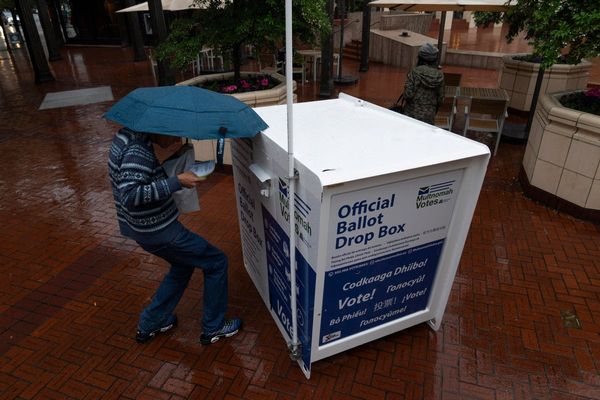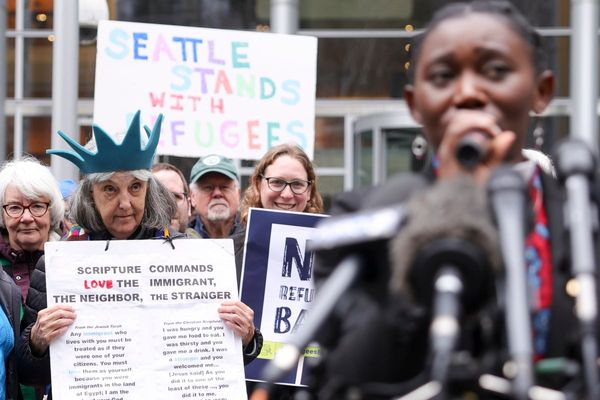
For nearly a decade, Nicole Gardner would tense up any time someone asked: “How many kids do you have?”
Her daughter Ronique Gardner Williams was shot and killed in 2015 while riding in a car in Richmond, California. Seven years later, her eldest son, Damon Gardner Isles, died following a seizure, but he had also been shot years before in Boston. Though her children died under different circumstances, they shared one tragic commonality: neither had received justice as the victims of gun violence.
To this day, no one has been arrested for shooting either of her children. Gardner says that communication with the Richmond and Boston police departments has been one-sided.
“No one was saying anything to me,” Gardner said. “I feel like they just want me to get over it and forget about it. And I won’t.”

Gardner’s experience has grown more common in recent years. Across the US, the homicide clearance rate – the share of reported crimes that lead to an arrest and are sent to a prosecutor – has decreased from just more than 60% in 1990 to about 50% in 2020, according to a CBS News investigation. This drop has been especially pronounced among Black victims, whose killings are increasingly less likely to be cleared than those of white victims, according to new research published on Wednesday in the journal Criminology.
For Black men, who are already more likely to be shot and killed than their white counterparts, the likelihood that their homicides will be cleared is lower than any other group.
“This means that there’s no guarantee that justice will be delivered for the most serious crime one can commit,” said Gian Maria Campedelli, a research scientist in the mobile and social computing lab at Fondazione Bruno Kessler in Italy, who authored the study. “There is an erosion of the sense of justice, and the disparity will create more of an erosion of trust between Black communities, police and institutions.”
Campedelli’s peer-reviewed study is based on an analysis of 30 years worth of homicide-clearance data pulled from the FBI’s national incident-based reporting system (NIBRS) and the Murder Accountability Project (MAP), which combines data from the FBI’s uniform crime reporting program (UCR) with news clippings and homicides discovered through Freedom of Information Act requests to fill any gaps.
Campedelli compared homicides that happened under the same circumstances in the same decade and place, and that involved victims of the same age and sex who had been killed with the same weapon – so the only difference in the cases would be the race of the victim.
Campedelli found that homicides involving Black victims were between 3.4% and 4.8% less likely to be cleared, across both datasets.
These findings show that a victim’s race plays a critical role in whether or not their killer will be found, he said. In some parts of the US, like Washington DC, Massachusetts, Illinois, Maryland and New York, according to the MAP data, the disparity can be even greater than this national average.
But these disparities are often obscured by patchy data.
Campedelli himself says he had to use two different datasets to ensure his findings were complete, since NIBRS, the nation’s main repository of crime data, had no homicide data for California, Florida, New Jersey or Alaska due to non-compliance in local police department’s reporting, he said.
“We’ve got to treat crime data like public health data. It should be available all the time,” said Alex Piquero, a criminologist and the former director of the US Bureau of Justice Statistics, a wing of the Department of Justice. “It pains me as a researcher to say we don’t have this information in 2024.”
***
The lack of answers, transparent data and engagement from law enforcement only deepen the well of pain left by the loss of a loved one to homicide, says Vickie McGaugh, who supports the families of people who’ve died from gunshot wounds throughout northern California.
“It helps our healing, because no one is helping us heal,” McGaugh said of her work. “All you want is for someone to have compassion, not to be left alone with no help, no support.”

McGaugh has been doing this advocacy – which includes a support group on Facebook, marches and frequent check-ins – since 2016 after her 19-year-old son, Andre McGaugh Jr, was shot and killed in front of her home as children played in a kiddie pool set up in the yard for a Memorial Day celebration. McGaugh remembers stepping inside her Sacramento home to greet her husband, who had just gotten home from work.
She then heard gunshots, and saw her son run to shield his four-year-old niece. After the shooting, McGaugh expected police to quickly identify a suspect. That didn’t happen.
“If they don’t have a lead, there’s no investigation. They tell us that they’re just waiting for someone to talk, for the community and streets to do something,” she said.
As the days slipped by without answers, she began putting up flyers imploring locals to call police with any information and held rallies to call for justice.
Still, no leads emerged, so McGaugh began reaching out to other mothers, mostly Black mothers, to lend an ear, share a meal and help them navigate the compounded trauma of a violent loss and denied justice. This work has helped the healing process some, but McGaugh is still praying that someone will step up with information and that the detectives will “do more on the case”.
“It’s a hard pill to swallow,” she said. “Our kids and family members have been murdered and we should be more attended to.”
There are a bevy of reasons why the killings of people like Ronique Gardner Williams and Andre McGaugh Jr go cold, says Capt Everett Babcock, who worked in the Kansas City, Missouri, police department’s homicide division for more than 20 years and now trains other law-enforcement agencies on how to get justice for families.
In addition to staffing shortages, Babcock says advances in forensic and investigative technology have meant that basic shoe-leather detective skills, like interviewing and building relationships with victim families and the broader community, have been under-utilized. This has led to the declining clearance rate as well as a deepening schism between police and the Black communities where homicides are concentrated, he said.
“I don’t think we’re handling that balance very well as a profession,” Babcock said.
“If you have victim after victim saying police don’t care, that creates a sense of defeatism that comes into the next case. People don’t want to waste their time working with police.”
There are other explanations for the racial disparity in clearance rates. In his study, Campedelli explains that according to a popular theory developed by the sociologist Donald Black, some victims get more attention than others, depending on their race or socioeconomic standing. When applied to homicide investigations, the theory holds that being unemployed, or having had prior contact with the criminal justice system, further decreases the likelihood of a person’s homicide being cleared.
Since her children’s passing, Gardner has made continued public calls for answers in her daughter’s murder, started volunteering with the gun-violence-prevention group Moms Demand Action, and run for city council. Now she’s raising money to move her two additional children back to the east coast as she waits to see someone held accountable for Ronique’s killing.
“When I first started, I couldn’t talk without crying my eyes out,” Gardner said. “I still cry, but that just makes me human. Tears are love, it’s deep, deep love. And being able to share is almost like therapy because I’m keeping Ronique’s name and memory alive.”







